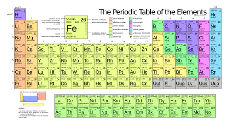Anthocyanidins and Anthocyanins
Click to activate, click-drag to position, wheel to zoom, right-click for menu.
Flavylium (2-Phenylchromenylium): the backbone of the Anthocyanidins/Anthocyanins family of pigments.



The backbone:

Anthocyanidins form the base of a ubiquitous class of phenolic plant pigments, of which Flavylium is the simplest form. In the backbone structure above, the various -R groups represent possible substituant groups. When all of the -R groups are protons, the resultant molecule is Flavylium. Other Anthocyanidins have various combinations of the -R groups replaced by hydroxyl or methoxyl groups. In plants foods, anthocyanidins are mostly present as glycosidic forms (anthocyanins), bound to glucose, galactose, arabinose, rutinose, sambubiose, sophorose, sometimes with the addition of an acetyl, caffeoyl, dioxalyl, malonyl, coumaroyl, or succinyl moiety [1]. Anthocyanins are the most important group of pigments, after chlorophyll, that are visible to the human eye. They are almost universal in higher plants and are responsible for many of the attractive colors, from scarlet to blue, of flowers, fruits, leaves, and storage organs [2]. Most of the red, purple, and blue-colored flowers contain anthocyanins. Red flowers are red hibiscus, red rose, red pineapple sage, red clover, and pink blossom. These red flowers are edible. Blue (cornflower, blue chicory, and blue rosem- ary) and purple (purple mint, purple passion flower, purple sage, common violet, and lavender) flowers are the common edible flowers. Some of these flowers have been traditionally used as folk medicine, as colorants, and as food. In addition to traditional usage, red, purple, and blue-colored fruits are commonly consumed for their beneficial effects. The colored pigments of anthocyanin from berries, blackcurrants, and other types of red to blue-colored fruits are strong antioxidants. Moreover, anthocyanin-rich black carrot, red cabbage, and purple potato are potential functional foods that have been consumed for prevention of diseases [4]. Anthocyanins found in plants have a wide range of usage. Blue, red, and purple colored pigments extracted from flowers, fruits, and vegetables are traditionally used as dye and food colorant. Besides being used as natural colorants, some of the anthocyanin-rich flowers and fruits have been traditionally used as medicine to treat various diseases. Anthocyanins have been widely studied for their medicinal values. Anthocyanins possess antidiabetic, anticancer, anti-inflammatory, antimicrobial, and anti-obesity effects, as well as prevention of cardiovascular diseases. Therefore, anthocyanins extracted from edible plants are potential pharmaceutical ingredients [4]. Historical use of these materials ranges from the Roman Empire to paintings of the Maya civilization. Their use has been described in several treatises on illumination painting. Anthocyanins were used to produce clothlets/watercolours, as described by Cennino Cennini in the 15th century, and to dye textiles. With anthocyanins the color domain ranges from red to blue, but with natural flavylium dyes it is limited to the yellow-red.[3]
[1] Assessment of the anthocyanidin content of common fruits and development of a test diet rich in a range of anthocyanins, Giulia Corona, et.al., Journal of Berry Research 1 (2011) 209–216 [2] Natural Pigments: Carotenoids, Anthocyanins, and Betalains — Characteristics, Biosynthesis, Processing, and Stability, F. Delgado-Vargas, et.al, Critical Reviews in Food Science and Nutrition, 40(3):173–289 (2000) [3] History of Natural Dyes in the Ancient Mediterranean World, Maria J. Melo, Handbook of Natural Colorants Edited by Thomas Bechtold and Rita Mussak 2009 John Wiley & Sons, Ltd [4] Anthocyanidins and anthocyanins: colored pigments as food, pharmaceutical ingredients, and the potential health benefits [sic], Hock Eng Khoo, et.al., FOOD & NUTRITION RESEARCH, 2017 VOL. 61, 1361779
